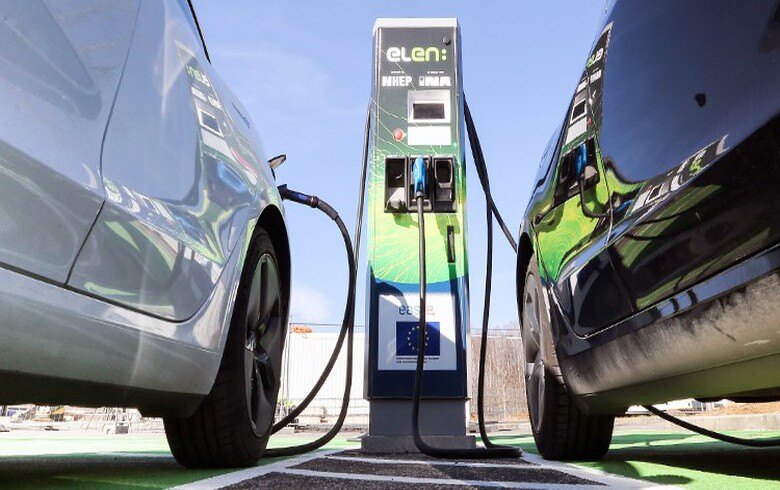How Do EV Charging Station Incentives and Rebates Work?
Read Time 4 mins | June 08, 2022 | Written by: Julia Segal

EV charging infrastructure is rapidly expanding in scale and spread around the country as transportation electrification advances. To support the adoption of EVs and the need for charging infrastructure, there are several federal, state, and local policy and financial incentives available.
Most significantly, President Biden signed the Bipartisan Infrastructure Law, also referred to as the Infrastructure Investment and Jobs Act, on November 15, 2021 which outlines significant funding for EV charging. This move underscores the necessity for developers of charging infrastructure and other stakeholders like property owners that plan to install or host chargers, to understand the various incentives and rebates available for installation.
How do EV charging station incentives and rebates work?
Though the initial investment for EV charging stations can be high, governments and utilities offer an array of incentives including tax credits, rebates, and grants. These incentives are a critical component of station installation. When coupled with the long-term benefits associated with making the switch to electric, we see how EV charging is a viable and sustainable investment option. The types of incentives available to a developer will vary based on location.
There are primarily three ways that an EV charging station owner or developer can avail tax credits, incentives, and rebates – the federal government, state governments, and local governments and utilities.
What are the federal grants for EV charging stations included in the recent Infrastructure Bill?
The bipartisan Infrastructure Investment and Jobs Act (IIJA), one of the single most important infrastructure investments in U.S. history, provides significant funding to state and local governments to incentivize the adoption of electric vehicles and EV charging infrastructure.
The bill provides $30.7 billion for the EV sector and $7.5 billion of the total is allocated for EV charging infrastructure. This comes in the form of two programs – $5 billion in formula funding is for states with the goal of building a national charging network and $2.5 billion is through a competitive grant program for communities and corridors that will ensure charger deployment supports rural charging, improves local air quality, and increases EV charging in disadvantaged communities.
EV related provisions have also been included in other parts of the IIJA. For example, the $72 billion Surface Transportation Reauthorization Act of 2021 includes funding for EV charging infrastructure and vehicle to grid infrastructure.
The funds are distributed using formula allocation and competitive grants. The formulas dictated by the bill are based on certain criteria like state population and states can then decide how to allocate the funds they receive. The competitive grants are distributed through an application process.
State EV Charging Incentives
As EVs take center stage in the fight against climate change, many states are offering grants and rebates to help install EVSE – Electric Vehicle Supply Equipment. The incentives and rebates vary by state, but it is helpful to look at a few examples.
Massachusetts grant programs include the Massachusetts Electric Vehicle Incentive Program (MassEVIP) Workplace & Fleet Charging Program which offers incentives to fleet operators and employers for the installation of Level 1 and Level 2 EV charging stations. To be eligible, applicants must have 15 or more employees in a non-residential place of business. MassDEP funds up to 60% of installation costs up to a maximum of $50,000 per street address.
California has numerous incentives and rebates. One example is the Electric Vehicle Charging Station Financing Program which offers loans of 10-15% for the design, development, purchase, and installation of EVSE at small businesses. Antelope Valley Air Quality Management District (AVAQMD) offers rebates of up to 80% of infrastructure and installation costs for public EVSE at eligible sites that include retail centers, multi-unit dwellings, workplaces, hospitals, public transit stations, and park and rides.
Here is a summary of EVSE incentives by state.
Utility and Local Incentives
Cities and utilities also provide significant incentives to set up EVSE including rebates for installation, infrastructure support to provide additional power supply to meet energy demand, and discounted energy supply to homes and businesses that have installed EVSE. Utilities will benefit from the electrification of transportation and therefore have a strong interest in incentivizing the rapid expansion of EVSE and adoption of EVs. Likewise, cities are looking to reduce pollution and help businesses attract EV users, boosting economic activity.
The cost of installing EVSE can seem daunting at first but there are a range of incentives available that can significantly offset costs. These incentives at the federal, state, and local levels are critical in speeding up the development of EVSE, which in turn expedites the adoption of EVs for personal and commercial use. It is very likely that incentive programs will continue to expand in the future as more public and private investment flows into the development of the EVSE ecosystem.
Sources:
Utility Best Practices for EV Infrastructure Deployment | SEPA (sepapower.org)
Federal Funding Programs | US Department of Transportation
https://www.ncsl.org/research/energy/state-electric-vehicle-incentives-state-chart.aspx
